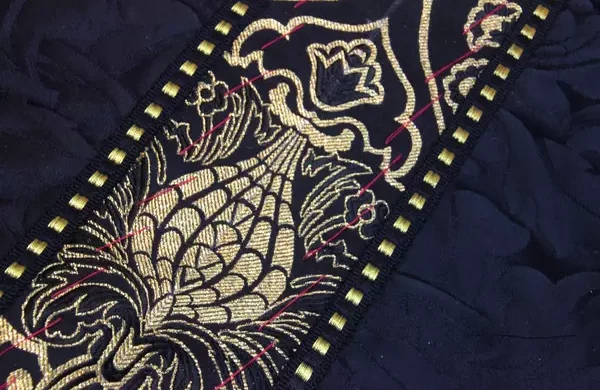
The orphrey trim for the chalice veil had been planned and cut to size and position based on the use of the black Passion Cross. The idea was to place the black motif on a gold motif so it would be more visible. The center of the orphrey was located and matched to the center of the design on the black Fairford Fabric.
Like this:
Like Loading...
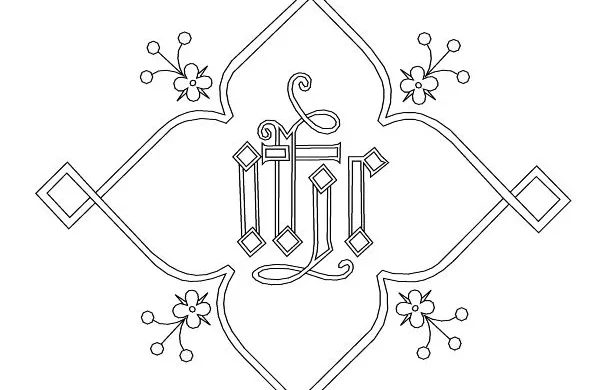
Merge three vintage Ecclesiastical Embroidery Designs into a versatile artwork. The simple lines make it ideal for whitework, but it seamlessly transitions for gold and silk Ecclesiastical Embroidery. For whitework, consider stitches like stem stitch, outline stitch, and padded satin stitch for letters. Alternatively, use outline stitch with seed stitch fill. Chainstitch is another excellent choice for whitework in Ecclesiastical Embroidery.
Like this:
Like Loading...
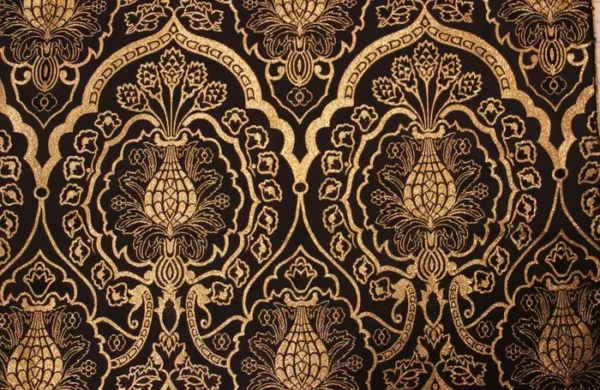
Ecclesiastical Brocatelle fabric for the Ash Wednesday and Good Friday Vestment set has a pattern repeat. But not a tiny, regular pattern repeat. It is a whopping 17″ pattern repeat. There is a tiny arrow at the point or peak of the gold border which is an Ogee pattern. This fabric also has a pattern repeated on the width which is easily determined by measuring the distance between the two black dots located at the base of the gold frame.
Like this:
Like Loading...
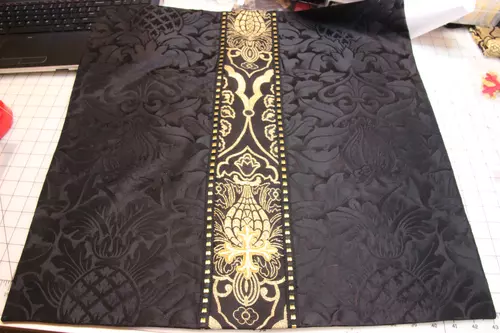
Making the Chalice Veil – a simple item to make is a chalice veil. The dimensions of the chalice veil can vary. The size used for my church is 24″ square. To keep the project simple, a plain fabric can be selected, But for now lets take a look pattern designs in the Fairford, there are two main motifs: the Pineapple and the Ogee. The pineapple motif was selected as the central motif on this chalice veil. The two crossed pins mark the center of the pineapple. The pattern design in Fairford makes it easy to match the same motif point to obtain straight and even lines for cutting.
Like this:
Like Loading...
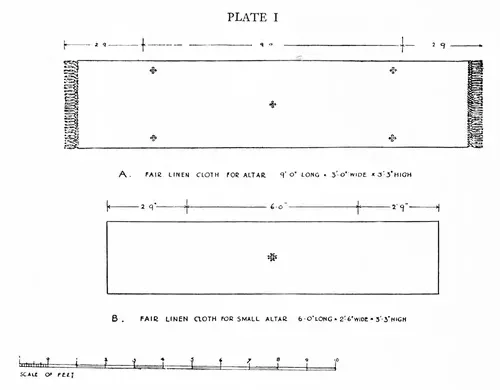
Fair linens, the top linen placed on the altar, are crucial liturgical items. According to Percy Dearmer, a renowned liturgical furnishing author, fair linens should be the exact width of the altar and extend within six inches from the ground on the sides. The linen should be good quality, hemmed, and bear one, four, or five devices in white, red, or blue. Modern recommendations suggest the fair linen’s length should match the superfrontal’s, often 9 to 12 inches. Working with 100% linen, mitering corners, and adding crosses can create a durable, elegant fair linen for the altar.
Like this:
Like Loading...
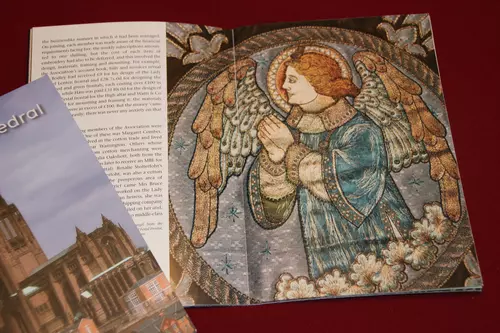
“The Embroideries at Liverpool” book talks about how people made beautiful embroideries for Liverpool Cathedral. A group of ladies had the idea to use one designer for all the embroideries, making them match the building. The book shares the story of these women who not only created amazing embroideries but also helped with the money for the projects.
Like this:
Like Loading...
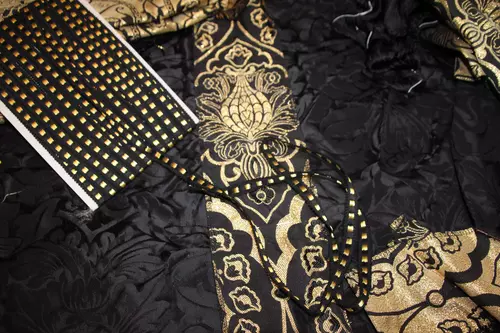
The Passion Cross – Church Symbolism by F.R. Webber
– This is a cross whose ends are cut to points. It is also known as the Cross Urdee, and the Cross Champain, sometimes the Cross Pointed. It represents the sufferings of our Lord and has been called by some authorities the Cross of Suffering. If pictured as rising out of a chalice, it represents our Lord’s agony in the Garden of Gethsemane. It may be used as a symbol of Maundy Thursday, or of Good Friday.
Like this:
Like Loading...
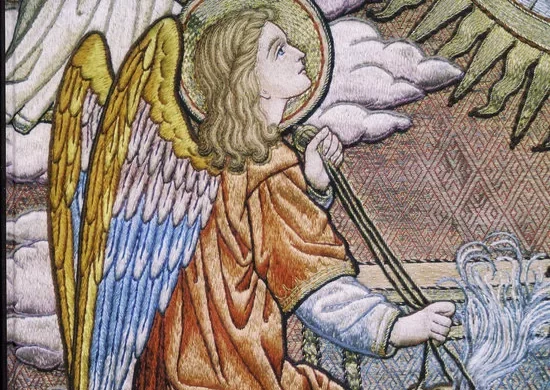
Book written by Marike van Roon, Head Curator at Amsterdam University as her dissertation was added to my library last summer and has become a favorite. Beginning at around the 1800s, the book lays out the history of European Ecclesiastical History through the 1960s. There is a nice mix of primary source material in the form of sketches and illustrations from texts and authors of the period, while stunning black and white, and color photography of actual vestments pieces
Like this:
Like Loading...
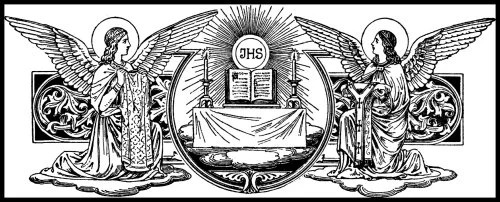
Making of a square yoke surplice pattern, graded to multiple sizes.
Like this:
Like Loading...
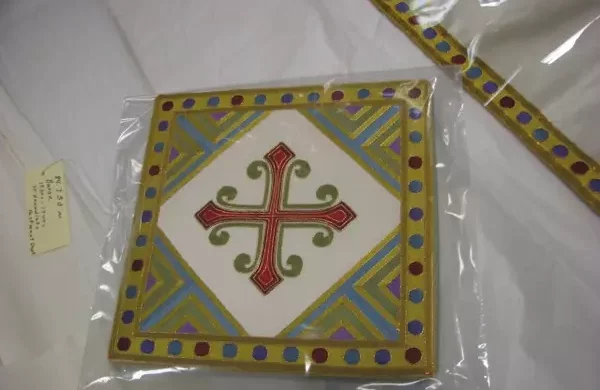
Entering the world of Ecclesiastical Sewing may seem challenging, with fears of intricate designs and historic techniques. However, beauty lies in simplicity, like a humble 1930s hand-embroidered cross. Draw inspiration from vintage patterns, such as Thomas Brown’s Church Embroideries, offering a variety of ideas. For machine embroidery enthusiasts, Windstar Embroidery digitizes Thomas Brown’s designs, providing creativity suggestions for hand embroiderers. Those with artistic talent can create personalized designs, adding a unique touch. To start, consider creating a stole, a beginner-friendly Ecclesiastical Sewing project.
Like this:
Like Loading...
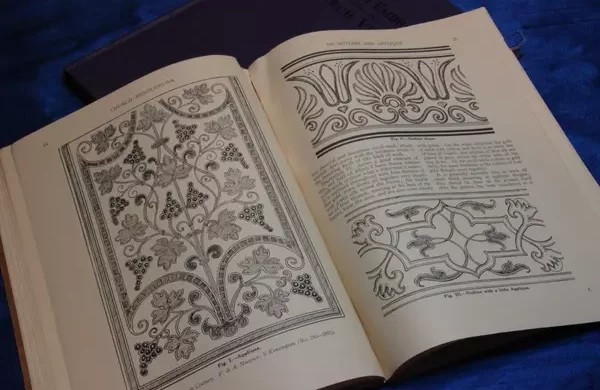
Changed plans for Advent Set due to lost time and supply delays.
A quick review from “Church Needlework” by Hinda Hands for ideas and now focusing on appliqué and outline work, balancing harsh designs with scroll accents. Using modern fusible web instead of paste for appliqué. Applying Alpha and Omega symbols directly to blue Silk Dupioni, so cutting fabric and adapting plans. Ecclesiastical Sewing project takes unexpected turns!
Like this:
Like Loading...
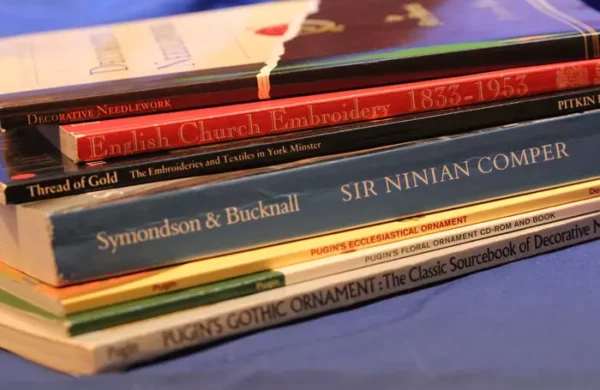
For those interested in church needlework, a few places offer courses worth exploring. Hexaemeron provides Traditional Icon embroidery classes, conducted by Olga Fishchuk, focusing on Byzantine and Russian embroidery techniques from the 14th to the 17th centuries. The classes, held at various US locations, offer rich instruction and historical context. On a different note, the Williamsburg School of Needlework in Colonial Williamsburg offers courses on whitework, suitable for church linens. The courses range from basic sessions to specialized topics like sacred monograms. Check out their detailed hand embroidery course descriptions for more information.
Like this:
Like Loading...
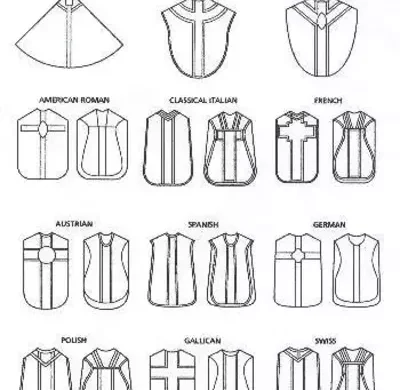
Monk habits, historical garments made in monasteries, had unique designs, each order having its own variations. The patterns and techniques were kept secret. With changing times, habits faded, and the knowledge of making them vanished. Traditional Monk Habit patterns and construction techniques are now disappearing with the loss of skilled tailors.
Like this:
Like Loading...
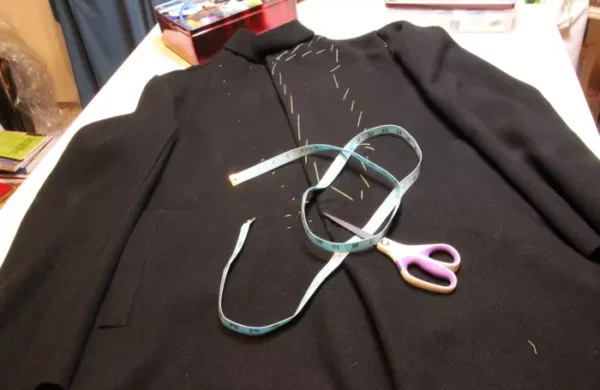
Returning Home – Monastic Habit – a young tailor from a monastery asked help with fitting, construction, and pattern drafting skills for a Monk Habit. Faced challenges with historical pattern blocks and sleeve fitting. After extensive research, they discovered instructions for drafting the Monk habit, successfully completing the pattern.
Like this:
Like Loading...
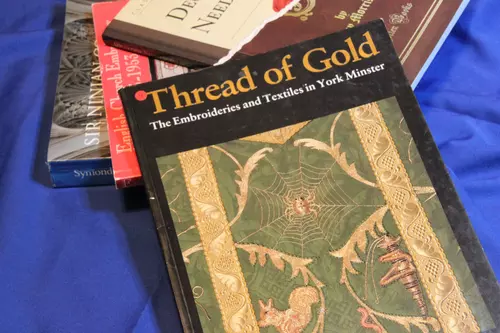
In “Books: The Next Best Thing Part III,” the focus is on Ecclesiastical Giants from the past two centuries. discovering “Thread of Gold: The Embroideries and Textiles of York Minster.” This book, edited by Elizabeth Ingram, offers the history of Ecclesiastical Embroidery and Vestments at York Minster. From pre-Reformation origins to fascinating stories about Queen Victoria’s silk and the restoration of the Great Processional Banner, the book provides a rich visual and historical embroidery.
Like this:
Like Loading...
















You must be logged in to post a comment.